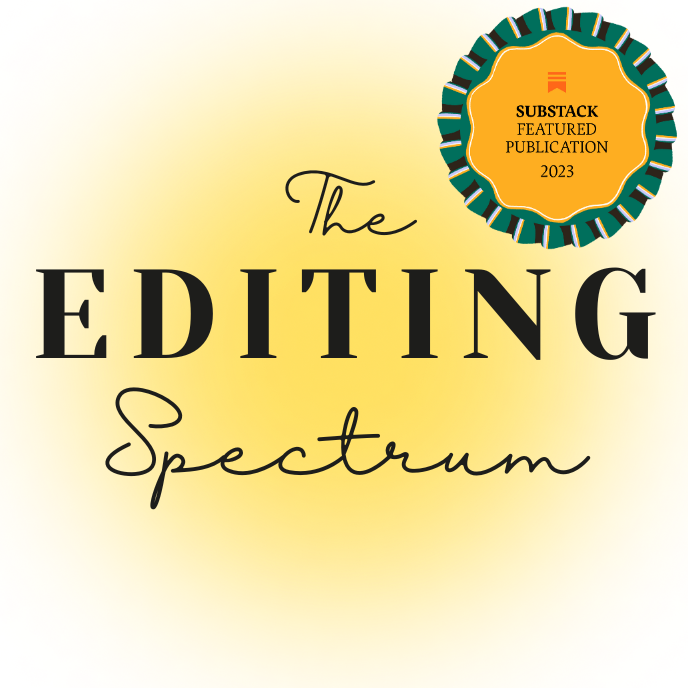The First Step to Being Traditionally Published
/If you’re looking to be traditionally published, this is the blog for you. Although we talk a lot on our blog about self publishing being a viable option for budding and established authors alike, we understand that self publishing isn’t for everyone. There’s a lot of necessary heavy lifting involved in self publishing, both financially and mentally. So in this blog I want to talk about what I think is an important first step to being traditionally published: creating a pre-release version of your manuscript.
When John and Greg first reached out to me last year, they handed me an 80-page research paper, pages of personal interviews and an excel spreadsheet with more than 100,000 lines of data from their own research paper. They’d received some considerable feedback from their Harvard MBA colleagues as well as conflicting advice: some were saying to self publish, others were insisting they find an agent who could get them traditionally published. My role morphed into part publisher, part advisor, part editorial guru.
What worked in their favor
Their research was substantial, their discoveries surprising. They were writing to a well-educated religious audience, and I knew they had all the ingredients to write a successful book. They could choose self-publishing, do the heavy lifting of marketing it, and then reap the financial rewards. Or they could pursue traditional publishing, make less money, but have more immediate distribution channels open to them.
Together we worked on their manuscript because as is, it read like a proper research paper, but it needed a personal touch. We designed an editorial pattern for weaving in the narratives around the research, and the guys did some heavy lifting to soften the serious nature in the tone of their writing. After some thought, they decided to use our design services to lay out the book and create reader-friendly graphics from their research. They printed a few hundred copies for a conference where they were speaking, and then spent the next eight months sending copies of this pre-release version through a series of reviews with hand-selected review groups.
John and Greg used a standard book-proposal template and had a sharp eye for writing a persuasive proposal. We worked together briefly on the proposal, but I knew they had the writing chops (not to mention the original research and refreshing approach) to make it stand apart. In December 2015, nearly 11 months after we met, John and Greg were signed by Rose Publishing. Their book debuted as the No. 1 New Release in Christian Stewardship on Amazon.
What this process looks like
John and Greg were more interested in the message of their book reaching the masses than amassing large amounts of money from the sale of their book. In fact, they’re donating 100 percent of their royalties to charities and Christian ministries. With this mindset, we were able to make the best decisions for their manuscript and set them on a path to success.
Their book was ultimately successful because they had tremendous research and a message that was refreshing and slightly controversial. I had no doubt it would sell. Not everyone’s self-published book begins with these sort of publishing muscles, but when they do, the book sells.
If you’re interested in trying to get traditionally published, I’d recommend considering the steps John and Greg took:
- Work with an editorial team to clean up your manuscript and objectively review it for salability.
- Lay out the book in design software and have it printed in a basic, low-cost soft cover book.
- Organize five to 10 groups of friends and trusted peers to give you feedback.
- Use Survey Monkey to collect important feedback and update your manuscript and book proposal.
One thing that’s important to note about John and Greg’s approach is that they did a lot of heavy lifting to write their own book proposal, reach out to agents, work with our editorial coaching and incorporate the feedback on their own from their review groups.
Why this approach can work
There’s nothing any editorial team can do to help a manuscript that doesn’t have a winning message or style. You don’t necessarily need to have ground-breaking research, but you will need to have a message you’re ready to share in a compelling and different way. The four-step approach above works for a few reasons:
- It’s a great first step to networking on behalf of your book.
- It gets people excited about your message and gives them something to share with their friends. (People love sharing their opinions.)
- Most people aren’t able to give feedback well through a Word document manuscript. The book format makes it easier for novices to review and write in the margins.
- The feedback from those peer review groups can significantly improve your book.
- It can bring your manuscript to a place where it’s more appealing to a traditional publisher.
- It gives you additional insights into what could appeal to your target audience (very important for your book proposal).
What this approach costs
Since we’re not in the business of raising people’s hopes unnecessarily, we usually like to spend an hour or two reviewing a manuscript. This initial review costs about $300 - $375 and includes a half-hour phone call where we discuss what we see as the strengths and weaknesses in your manuscript.
If we think there’s considerable potential in preparing the manuscript so it’s publisher-ready, then we’ll look at moving forward with working with you to create a pre-release version of your book. Depending on the state and length of your manuscript, this usually costs around $5,000, plus the cost of printing the books. An average 120-page book will cost between $1.75 and $2.50 each to print, depending on how many copies you print. We can usually complete the pre-release version in eight weeks, but sometimes it will take longer.
What happens once you’re traditionally published
The first step is to make sure you’re being traditionally published. If a publisher offers to represent you if you pay them money, it’s not traditional publishing. The whole point of being a traditional publisher is that they assume some (if not all) the risk of publishing you and investing their in-house resources in exchange for a portion of the royalties when your book becomes a best seller.
Depending on their appraisal of your manuscript, they’ll likely calculate a royalty advance check and begin creating a marketing platform for you. For John and Greg, Rose Publishing improved their author website, connected it with their social media accounts and had a big launch leading up to the publishing of the book. No matter how successful the author, he or she will be expected to invest considerable energy into promoting the book through channels and networking events. So, while a traditional publisher will bear a lot of the burden in setting you up for marketing your book, the responsibility will eventually shift considerably to your shoulders.
Who we work with
Publishing is a necessarily complicated business, and it’s important to find someone who can work confidently with your manuscript. With this in mind, we know we’re not the best fit for every author. (Fantasy, science fiction or historically based works probably aren't in our wheelhouse.) We work best with authors who are looking to publish relationally driven, spiritual or religious messages. From start to finish, this process usually takes about 8 weeks to create a final, press-ready pre-release version of a book, which includes the time we give authors to work with our feedback. If you have any questions, feel free to find us on our Contact Us form.

